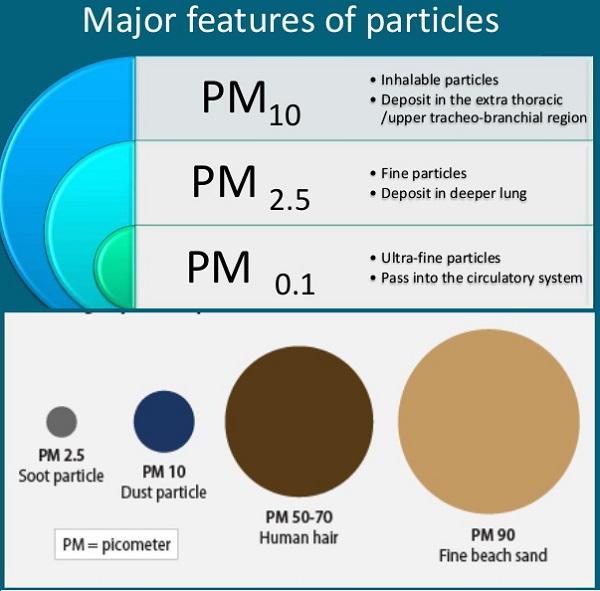Updated By: LatestGKGS Desk
Science: Particulate Matter (PM2.5 and PM 10 ) Properties

Air Pollution: Particle pollution involves PM 2.5 and PM 10 which are very dangerous to Human Health
PM is also called Particulate Matter or particle pollution, which is a mixture of solid particles and liquid droplets present in the atmosphere.
The particles present in the air are so small that you can not even look with the naked eye.
Some particles are so small that they can only be detected using the electron microscope. Particle pollution involves PM 2.5 and PM 10 which are very dangerous.
PM 2.5 refers to atmospheric particle matter, which is less than 2.5 micrometres, which is about 3% of human hair diameter.
Generally written as PM2.5, the particles in this category are so small that they can only be detected with the help of the electron microscope. These are smaller than PM10 counterparts. PM10 are particles with a diameter of 10 micrometres and they are also called fine particles.
According to environmental experts, PM10 is also called respirable particulate matter.
Particulate Mater are different sizes and it can be due to both human and natural sources. Sources can be primary and secondary. The primary source includes automobile emissions, dust and cooking smoke.
The secondary source of pollution can be a complex reaction of chemicals like sulfur dioxide and nitrogen oxide. These particles are mixed in the air and pollute it.
Apart from these, forest fires, wood burning stoves, agricultural burning, a smoke of the industry, dust air pollution generated from construction and so on are the sources.
